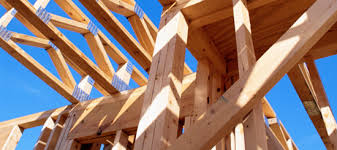Once wood has been cut, it begins to lose moisture. This moisture loss however takes place faster on the exterior than in the interior and as a result, cracking takes place. It is through the cracks that insects and moisture get into the wood and damage the heart. However, it is important to note that, the rate and ease of damage depend on the quality of the beams. You, therefore, need to choose the best quality beams as a precautionary step. There are several ways of protecting exposed wood beams from such damages. They include the use of a beam cap, flashing, shielding, fastening, and erection protection.
Beam cap
The beam cap has got MS colorfast45 which enables it to resist color change and the wood beams will perform exceptionally for years in spite of harsh weather conditions. The metals used in making the beam caps are non-reactive and therefore cannot react with adhesive chemicals. More so, These beams are maintenance-free since there is no staining or painting required.
Flashing and shielding
This involves visually obscuring some portions of wood and designing them properly to act as shields to the exposed parts of the wood beams. These methods are more advantageous than others which provide independent protection since they provide close protection to the structure of the wood. Flashing and shielding can be done using several materials including wood, metal, and even polyethylene. All these are aimed at protecting exposed wood beams and below are some of the ways in which they are affected.
i. Wood shields
In this case, a 3/4 inch plywood or an inch stock is glued or nailed on the exposed surface of the wood beam. The wood cap is always independent of the wood beam and it offers utmost protection to the beam. The cap directs away water from the sides of the wood beam. It also protects it from the moisture in between the beam and the decking. This is actually the area where the decay begins. Therefore, proper shielding has to be done to ensure that these parts are protected. In the case where there are columns designed using cedar poles, a wood-block capital prevents moisture from reaching the end grain.
ii. Metal fashing
The most common metal for flashing is copper since it has sharp lines and it is also kind of decorative. In this case, the metal cap is directly nailed to the wood beam resulting to non-uniform expansion and contraction. Once moisture gets in, it will remain and may also result into corrosion of the metal. Air circulation is also a necessity during harsh weather conditions since it will evaporate away the moisture. To achieve this, the metal cap and the beam are separated and preferably, nailing is only done on the sides. Sufficient air also minimizes heat transfer and is also therefore considered as a protecting factor. In the case where you are protecting the beams from concrete decks, a polyethylene plastic sheet is used to separate the wood and the metal. As a result, no chemical action will take place between the wood and the metal.
These are the main ways of protecting exposedwood beams you can always consider. But, remember, at the end of the day, prevention is better than cure. You, therefore, need to do your research and ensure you purchase only the best beams. Consider major distributors like Sherwood Lumber, as you can be sure to get nothing short of quality.











